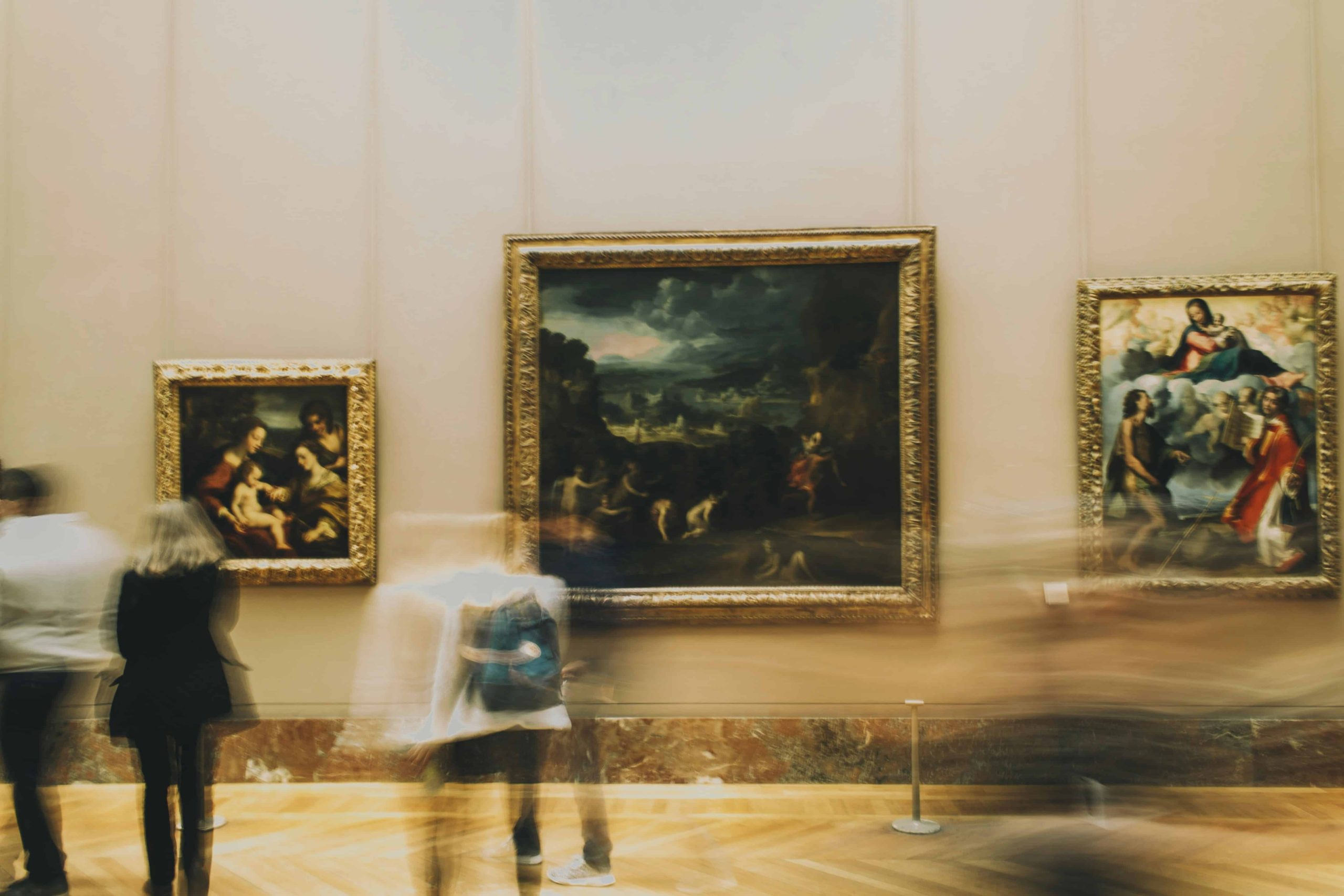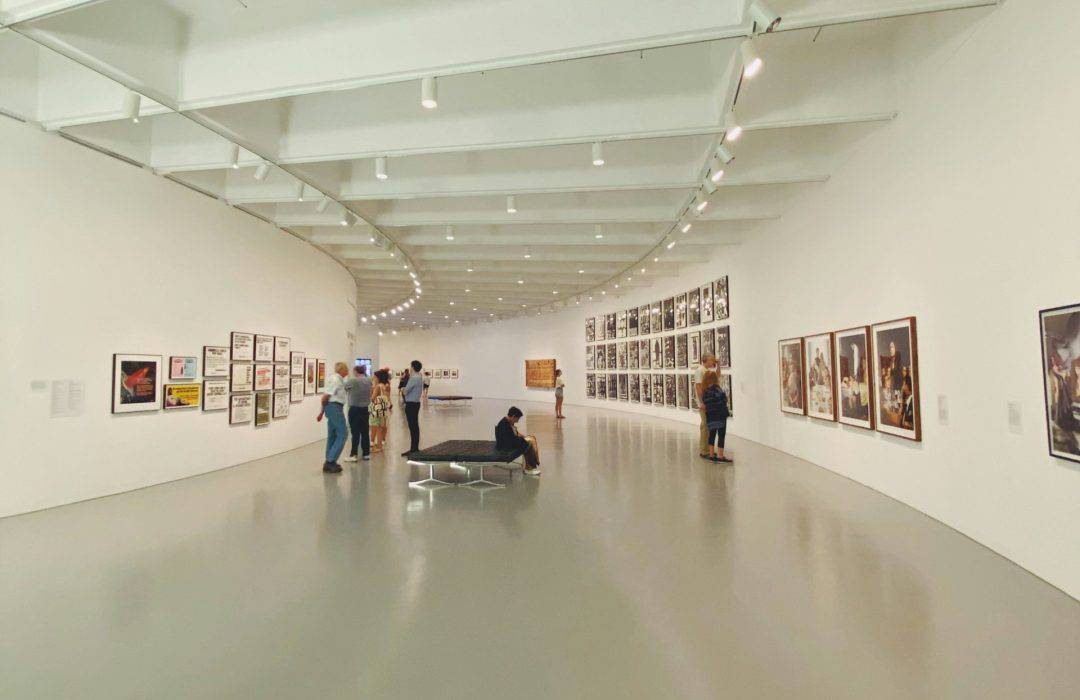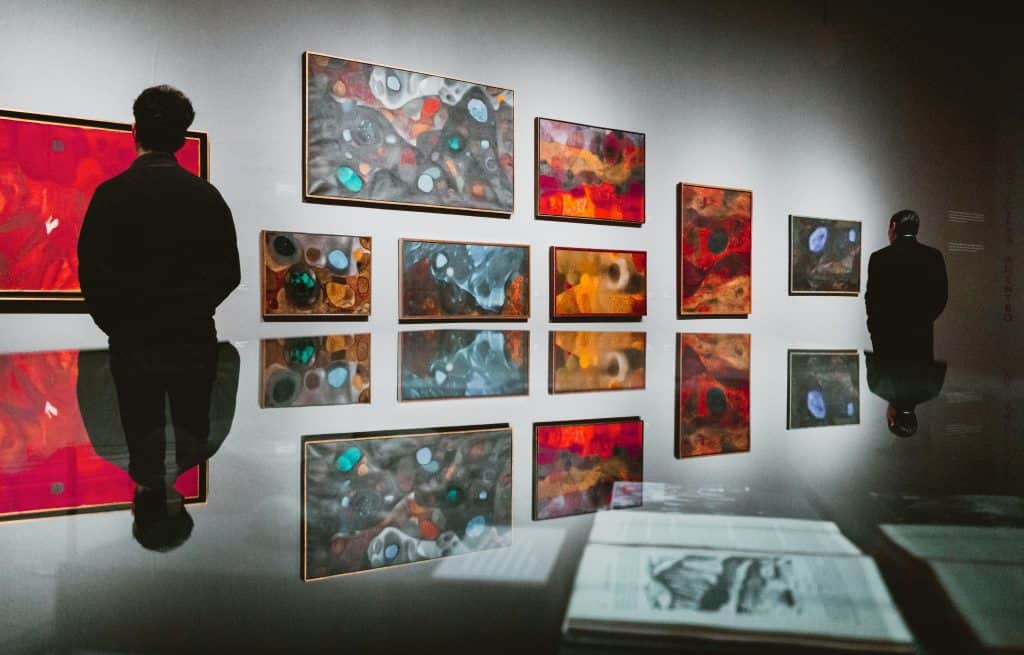
15 Mar The Role of Galleries in Global Art Dialogue
Art dialogue, as a dynamic and potent tool, operates as a conduit for cultural exchange and mutual comprehension within our increasingly interconnected world. Within the realm of physical and virtual spaces, galleries emerge as pivotal agents in fostering this dialogue, serving as vibrant hubs where artists and audiences alike converge to explore a myriad of perspectives and concepts from diverse corners of the globe. At the heart of this discourse lies the central thesis that galleries play an indispensable role in not only facilitating but also enriching the global discourse on art. These spaces transcend geographical boundaries, offering fertile grounds for the cross-pollination of ideas, the celebration of cultural diversity, and the cultivation of understanding. Through exhibitions, installations, and interactive experiences, galleries provide a platform for artists to share their narratives, challenge prevailing norms, and spark meaningful conversations that resonate far beyond the confines of their walls. Moreover, galleries serve as catalysts for collaboration, encouraging interdisciplinary exchange and fostering connections between individuals from disparate backgrounds. In doing so, they contribute to the evolution of artistic discourse, forging pathways for innovation and transformation within the broader landscape of contemporary art. In essence, galleries stand as vital conduits through which the intricate tapestry of global art dialogue is woven, continuously shaping and reshaping our collective understanding of the world and the myriad expressions that inhabit it.
Functions of Galleries in Fostering Global Art Dialogue

Photo by Vlad Gorshkov
Exhibition Platforms
Galleries serve as crucial exhibition platforms, offering dynamic spaces where diverse artistic voices from various regions and cultures converge. These spaces are not merely showcased but arenas where creative expression transcends boundaries. Through carefully curated thematic exhibitions, galleries initiate dialogues about pressing global issues, opening avenues for critical reflection and discourse. By spotlighting underrepresented art movements and communities, galleries act as catalysts for social awareness and inclusivity, amplifying voices that might otherwise go unheard.
Artist Support and Development
Galleries are powerful agents for international artists, acting as worldwide brand ambassadors in artist development and support. It foster the exposure and acknowledgment of artists from a variety of backgrounds, which is crucial for their artistic development and longevity. Galleries also operate as centers of connectedness, encouraging communication and cooperation between artists from different backgrounds and places. Galleries foster talent by offering venues like artist lectures, seminars, and residencies, which provide artists priceless chances to hone their skills, discover fresh viewpoints, and build their networks.
Public Engagement and Education
Galleries actively contribute to public engagement and education by spearheading a myriad of initiatives aimed at enriching the cultural landscape and fostering artistic literacy. They design educational programs and events tailored to diverse audiences, offering insights into different artistic traditions, techniques, and conceptual frameworks. By creating spaces for dialogue and debate, galleries encourage viewers to engage critically with art and its broader socio-political contexts. Moreover, galleries serve as conduits for cross-cultural exchange, bridging local and international art communities through collaborative ventures and partnerships. Through these initiatives, galleries empower audiences to navigate the complexities of contemporary art while nurturing a deeper appreciation for cultural diversity and artistic expression.
Challenges and Opportunities

Photo by Frank R
Challenges
Many obstacles stand in the way of communication and understanding in the field of artistic expression. One significant obstacle is language difficulties, which frequently prevent audiences and artists from different linguistic backgrounds from having productive conversations and understanding. Furthermore, accessibility is still a major issue, especially for underrepresented audiences and artists who might not have as many possibilities to participate in and contribute to the cultural conversation. Prevalent market trends that put commercialized art above genuine creative expression provide another big obstacle and run the risk of restricting innovation and variety in the field of art.
Opportunities
Amidst these challenges, however, lie compelling opportunities for growth and development within the artistic community. Online platforms offer a promising avenue for artists to transcend geographical boundaries and connect with audiences on a global scale, thereby amplifying their reach and impact. Additionally, international art fairs serve as dynamic hubs for networking and exposure, providing artists with invaluable opportunities to showcase their work to diverse audiences and forge connections with fellow creators and industry professionals worldwide. Furthermore, cultural exchange programs play a pivotal role in fostering cross-cultural understanding and collaboration, enriching artistic practices through the exploration and celebration of diverse cultural perspectives. By leveraging these opportunities, artists can not only expand their horizons but also contribute to the cultivation of a more inclusive and vibrant artistic ecosystem.

Photo by Luis Villasmil
Conclusion
Galleries undeniably play a pivotal role in fostering global art dialogue by serving as dynamic platforms for exhibition, artist support, and public engagement. Through curated exhibitions, artist development programs, and educational initiatives, galleries facilitate cross-cultural exchange and critical discourse, enriching the global artistic landscape. Despite challenges such as language barriers, accessibility issues, and commercialization trends, opportunities for growth and innovation abound, particularly through online platforms, international art fairs, and cultural exchange programs. By embracing these opportunities and addressing challenges collaboratively, the artistic community can continue to bridge cultural divides, celebrate diversity, and cultivate a more inclusive and vibrant global art dialogue for generations to come.
Key Takeaways
|
Functions of Galleries in Global Art Dialogue |
Examples of Galleries and Initiatives |
|
Exhibition Platforms |
Tate Modern’s “Global Voices” series |
|
Artist Support and Development |
Guggenheim’s artist-in-residence programs |
|
Public Engagement and Education |
Tate Modern, Guggenheim Museum |
FAQs
How do galleries contribute to global art dialogue?
Galleries play a crucial role in shaping the global art dialogue by serving as vital exhibition platforms. Through carefully curated showcases, galleries not only present diverse artistic expressions but also facilitate meaningful conversations around contemporary issues and aesthetics. Moreover, galleries actively support international artists by providing them with visibility and resources to exhibit their work to broader audiences. This support extends beyond physical spaces, as galleries often organize artist residencies, workshops, and lectures, which further enrich the cultural landscape. Through these efforts, galleries contribute to fostering cross-cultural dialogue by bridging geographical and ideological divides, ultimately enriching the global art discourse.
What challenges do galleries face in promoting global art dialogue?
Galleries face several challenges in their endeavor to promote global art dialogue. Language barriers pose a significant obstacle, particularly in engaging with artists and audiences from different linguistic backgrounds. Additionally, accessibility issues, both in terms of physical access to galleries and affordability of artwork, can limit the inclusivity of the dialogue. Moreover, galleries often grapple with market trends that prioritize commercialized art over experimental or socially engaged practices, which can undermine their efforts to foster diverse and meaningful artistic conversations.
What opportunities exist for galleries in a globalized art world?
opportunities abound for galleries in a globalized art world. The emergence of online platforms has revolutionized the way art is accessed, allowing galleries to reach broader and more diverse audiences beyond their physical locations. International art fairs provide platforms for galleries to showcase their artists on a global stage, facilitating connections with collectors, curators, and fellow galleries from around the world. Additionally, cultural exchange programs offer avenues for collaboration and mutual learning between galleries, artists, and audiences across different regions and contexts. By embracing these opportunities, galleries can actively participate in and contribute to the dynamic and interconnected landscape of global art dialogue, enriching the cultural fabric of societies worldwide.
Explore the “Art Education and Its Impact on Societal Development” as it influences societal development and fosters individual growth.

